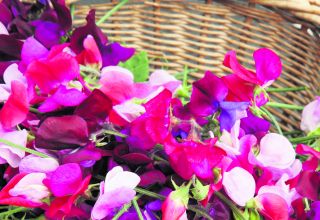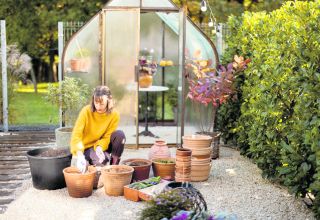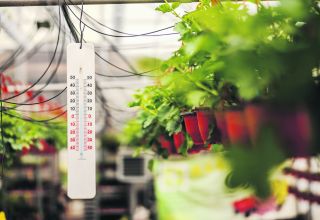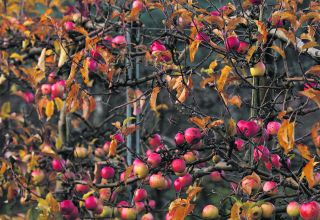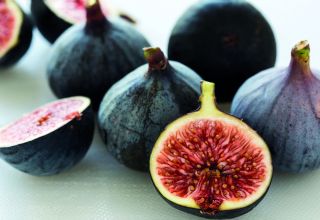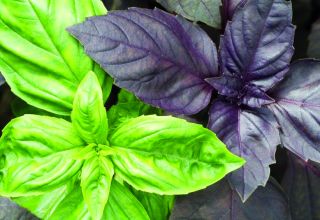Dorset gardener Amy Bolton has been drying herbs from her small garden for over 20 years and in recent years has managed to get a wonderful harvest.
I wish everyone knew just how easy it is to gather herbs from your garden, dry them, and save them for use all year. It’s simple good fun and has lots and lots of benefits in the kitchen and in the home.
Let’s look first at some of my favourite herbs to dry.
This is really drying herbs just like my grandma taught me, the old-school way. I love to follow tradition and make most things at home.
I don’t ever want to lose touch of my home and upbringing, no matter how many fancy tools and equipment are available. You can do this with every single herb imaginable. Basil, thyme, oregano, mint, you name it!
By using this simple method you can enjoy aromatic dry herbs for months. There is nothing that tastes better than homemade, no store-bought herb will ever be this aromatic. Keep in mind that dried herbs are four times stronger than fresh, so less is more in your recipes.
The best herbs to dry
I dry bundles of these herbs to use their fragrant flowers and/or leaves in the kitchen or in dried floral arrangements around the house:
- anise hyssop
- calendula
- chamomile
- lavender
- lemon balm
- mint
- oregano
- rosemary
- sage
- thyme
Sage is a standout for its ability to hold its fragrance when dried.
Here’s how to dry herbs by hanging them:
- Harvest herbs from the garden.
- Wash them to remove any dirt and debris.
- Give them a spin in a salad spinner or pat them gently with a towel to dry.
- Remove lower leaves from the stems so that you have about an inch and a half of bare stems at the bottom of each sprig.
- Gather these bare stems and tie them in bundles with twine.
- Hang these bundles to dry on a clothing line or place on an herb drying rack.
- The key is to dry your herbs somewhere cool, dry, and dark. Light can strip your herbs of that great flavour you’re trying to preserve.
- Herbs with more tender leaves like mint are prone to growing mould if exposed to too much moisture.
How to tell when herbs are dried
Most herbs will be dried out after just one week, but I recommend giving them another two to three weeks to be sure all moisture is gone from the leaves.
You’ll know your herbs are fully dried and ready to be stored when they have that nice, crunchy texture. The stems should feel brittle and easily crack if you bend them; if they’re flexible to your push at all, that’s a sign there’s still moisture left in the herb.
How to store dried herbs
When properly dried, leaves will often crumble when rubbed. For roots and barks, if they are brown, shrivelled, and feel dry, cut several pieces to make sure they are dry all the way through. If so, they are ready for storage.
When your herbs are thoroughly dry, they are ready to be prepared for storage. Plan to store your dried herbs in well-sealed glass jars in a dark cool area. A cupboard or even boxes under your bed are all viable options. I keep the bulk of my herbs in a cupboard and bring out small quantities for daily use in cooking. Also, remember to label your jars with the name of the herb and the date it went into the jar.

